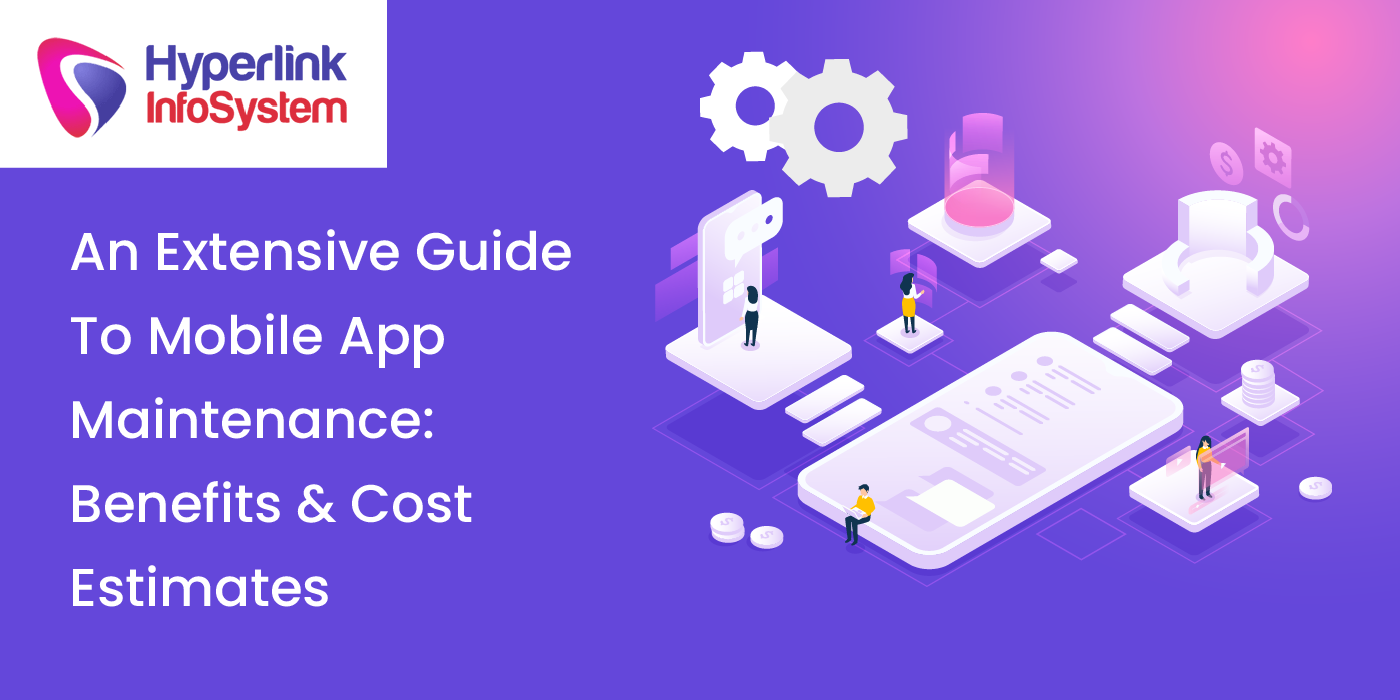The mobile app development process is broad, and your work doesn’t end once you have developed an app. In fact, your actual task begins once you have developed the app because the mobile app demands constant improvements and upgrades once it is created. And if your app seems outdated to the users, they will certainly switch to your competitor app.
Mobile app maintenance is a continuous process wherein the app developers make sure that the whole
app development process is error or bug-free. It includes several aspects such as fixing bugs, upgrading features, and other improvisations.
It should be noted that over 55% of the users uninstall the app in only 3 months after its launch. This tells us that the consumer market is running fast, and there is no space for bugs or outdated content. This is where mobile app maintenance comes into the picture.
Different Types Of App Maintenance
1. Perfective App Maintenance
It takes into account the user database and their requirements or feedback after using the app and accordingly incorporating them into the mobile app.
2. Preventive App Maintenance
As the name suggests, this one is specially focused on mitigating or removing the bugs or errors in the mobile app. It mainly works on preventing app complexity and making it easier to use.
3. Emergency App Maintenance
This one looks out for all the issues and errors that afflict the system and requires instant intervention. If the company finds itself in a troublesome situation concerning mobile apps, it should go for this type of maintenance.
4. Adaptive App Maintenance
The one is focused on updating the system to keep it acquainted with the new software or changing hardware.
5. Corrective App Maintenance
This one involves residual error and fault fixation in the daily app functions. The residual error refers to errors in coding, logic, or design. They are normally determined from the bugs revealed by the users.
How Can Maintenance Benefit Your Mobile App?

Great User Experience
Only downloading or one-time using your app is not enough. The user should use your app often, and for that, your app needs to deliver a fantastic user experience to interact with your users. Your app should be updated with the latest trends in the market to keep users satisfied.
Cost-efficiency
If you pay heed to your app, you can save redundant expenses. Moreover, you can get to know which features are widely used and seldom used; hence unused features should be discarded from your app to create room for new trending features to increase your mobile app ROI.
Reduces The App Churns
Fantastic user experience is the main thing that your app should deliver. And if a user finds any bugs, they wouldn’t use it and ultimately uninstall it. Therefore, working on the bug fixation in the apps would reinforce the foundation and help drive the traffic and maintain them.
Supervision
Staying updated with the criticism and the issues faced by the users would help your app. Furthermore, resolving the problems experienced by the users as quickly as possible would improve their app experience and help your app flourish.
Boosts Scalability
If your app maintenance is looked after, the app productivity increases. In exchange, when the company or user needs to reduce, the developer adjusts the maintenance costs as per their needs.
Stay up-to-date
Tons of apps are waiting to be downloaded, which is why your app dynamics must be broad and in sync with future trends and technology. Releasing new features and repairing the bugs prompt should be the critical factors to focus on. Closely monitoring consumer feedback would inform you how you can enhance in developing and maintaining the app structure.
Guarantee Security
This is another important feature that should be considered while maintaining the app. You must ensure that the data in your device is secure from errors and malware.
The Mobile App Maintenance Cost

App maintenance differs from industry to industry; however, it depends on the app complexity, tech stack used, the platform on which it was developed, etc. According to experts, mobile app maintenance can cost around 15-20% of the entire
app development cost.
Below are a few factors to consider for determining the app maintenance cost;
The average app maintenance cost includes promotional activities, content generation, buying media elements, graphic design, and much more.
Regular maintenance costs such as new tech integration, code change, upgrading platforms, and more.
Hosting services or improving servers can also influence app maintenance costs.
How Can You Prevent Mobile App Maintenance Costs?
Choosing The Right App Development Platform
Selecting the right platform for your app can impact the efforts, time, and costs you invest in your app.
At present, there are two major app development platforms;
- Hybrid App Development
- Native App Development
Hybrid app development is a cross-platform, and it saves ample time and costs as a single code is used to build apps on two operating systems. And this one is your best bet if you want to offer services on various platforms so that you don’t have to maintain multiple apps separately.
Whereas, Native apps are built for a particular OS. You have to create multiple apps for multiple OS such as Windows, Android, or iOS. But native apps are usually quicker and eat up less space once downloaded.
Develop An MVP App
MVP, aka minimum viable product, is an app with only basic features. Therefore, providing redundant features will only increase the app size, app crashes, and loading time. Hence, it is advised for you to create an app with essential features only.
The Endnote
Mobile app maintenance is a need of the hour for your mobile app business. With better app maintenance, it gets easier for businesses to become aware of user needs. Long-term investments can ensure better ROIs and an exceptional user experience.

























